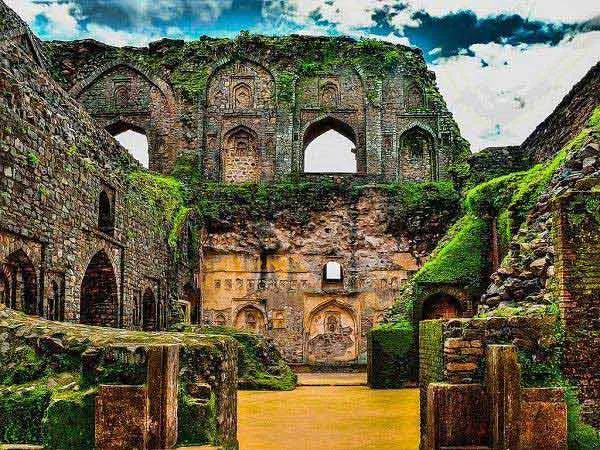Botanical Garden Nagpur: Expansion, Facts & Property Rates
Nagpur is growing fast, new roads, new projects, rising apartment towers, but pockets of calm still exist. One of the most important of those is the Botanical Garden Nagpur (commonly known as the Satpuda / Satpura Botanical Garden on Seminary Hills). For decades the garden has been a quiet classroom for students, a peaceful morning route for joggers, and a weekend escape for families.
In this post I’ll walk you through its history, facilities, visitor trends, nearby property market, recent development news, and plans for expansion, all written for Nagpur readers.
Quick snapshot (summary points)
- Official name / popular name: Satpuda (Satpura) Botanical Garden, commonly referred to as Botanical Garden Nagpur and located on Seminary Hills, near Futala (Phutala) Lake.
- Type: Urban botanical garden / green educational reserve with themed sections and rare plant collections.
- Best for: School & college students studying botany/zoology, birdwatchers, morning walkers and families seeking calm.
- Typical opening: Most listings show early-morning to early-evening hours (check local notices; occasional closures for maintenance).
- Recent status: Parts of the garden have been under development or closed for upgrades at times; local news has reported temporary shutdowns and handovers for redevelopment.
About Botanical Garden Nagpur – history & origin
The botanical garden on Seminary Hills grew from Nagpur’s long civic tradition of preserving green pockets amid urban sprawl. The space around Seminary Hills and Phutala Lake has been valued for its natural beauty and birdlife for many decades. Over time local authorities and university departments (including agricultural and forestry bodies) curated plant collections, turning the area into an educational garden that highlighted regional flora and a few exotic species.
Key historical points in short:
- Began as a natural green patch used by local residents and students.
- Over time, plant collections were catalogued and the site acquired the “botanical garden” identity to support biology and environmental studies.
- The garden rose in popularity as an accessible, low-cost green space for Nagpur families and became a spot for birdwatchers and school outings.
While the garden has a quiet local history rather than a dramatic single founding event, its importance comes from steady community and academic use, a living lab more than a tourist attraction.
Amenities at Botanical Garden Nagpur (what to expect)
The botanical garden is built to be simple, educational and relaxing. Amenities have varied over time and between different parts of the garden, but the common features that visitors can expect include:
- Walking paths and trails — paved and unpaved routes for morning walkers, joggers and casual strolls.
- Plant displays with labels — many trees and shrubs are identified for students and casual visitors; some sections focus on medicinal, ornamental, or rare species.
- Seating & shaded areas — benches and under-tree resting spots for families and elders.
- Birdwatching spots — Seminary Hills is rich in local birdlife; the garden serves as an easy birding location.
- Small kiosks or food stalls (where allowed) — basic refreshments near the entrance at times; availability depends on management and maintenance.
- Educational signage and school visit arrangements — used by local colleges and schools for practical sessions.
- Parking and wheelchair access — limited but present in some entry points; check current local signage before visiting.
Note: The presence and quality of these amenities can change because parts of the garden have been closed or refurbished occasionally. Always confirm local opening status on the day you plan to visit.
Footfall at Botanical Garden Nagpur – who visits and when
Estimating footfall precisely is difficult without official counters, but local sources and historical usage patterns let us describe typical visitor flow:
- Mornings: highest footfall from fitness enthusiasts and walkers, Seminary Hills and the garden are popular sunrise spots.
- Weekends & evenings: families, photography lovers, and casual visitors increase numbers. The garden historically attracted thousands of locals across weeks and months.
- School/college seasons: scheduled educational visits bring small groups for study sessions.
Recent news reports have said some gardens, including the botanical garden and Ambazari, were temporarily closed for maintenance or handed to developers for upgrades, which reduced footfall during closure periods. Reopening plans or upgrades influence visitor numbers strongly.
Properties for sale near Botanical Garden Nagpur – neighborhoods & rates
Living near a well-kept green space is a major draw for many home buyers. The Seminary Hills / Phutala Lake area and nearby localities (Manish Nagar, Besa, Wardha Road corridor, and certain parts of New Nagpur) are among the sought-after residential pockets for those wanting green views and shorter travel to central Nagpur.
Here’s a practical snapshot of the real estate scene near the Botanical Garden Nagpur:
- Neighborhoods close to the garden: Seminary Hills, Vayusena Nagar, Futala / Phutala Lake area, parts of Manish Nagar and adjacent residential pockets. These areas mix independent houses, older bungalows, and some newer apartment projects.
- Price ranges (approximate, market snapshot):
- Apartments near central Nagpur typically range widely; city averages are often reported around ₹3,000–₹6,000 per sq ft in mid-city locations, with premium pockets higher. (These are city averages, specific rates near Seminary Hills may vary.)
- Independent houses / villas — prices depend on plot size, age and exact street; some listings show values from a few tens of lakhs up to crores for prime plots.
- Why buyers like this location: proximity to green space, pleasant evening walks, educational institutions nearby, and comparatively quieter streets in certain stretches.
Important: Real estate numbers change quickly. If you’re actively looking to buy near the Botanical Garden Nagpur, contact a local broker or use up-to-date property portals (NagpurHousing, MagicBricks, 99acres, Housing.com) for current rates and verified listings.
Quick facts – Botanical Garden Nagpur (bullet list)
- Location: Seminary Hills area, close to Phutala (Futala) Lake; accessible by local roads.
- Area: The garden’s footprint has varied in reports; some development projects referenced 50–60 acres in nearby green projects and reserves. (Different parks and RET initiatives exist around Nagpur with varying acreages.)
- Managed by: Historically coordinated by local / state forest departments, agricultural/university departments or municipal bodies depending on the section; parts have been handed over for redevelopment.
- Popular for: Birdwatching, botanical studies, morning walks, and small family outings.
- Entry fees: Often nominal or none for open hill areas; smaller fee for specialized garden sections when maintained. Confirm local notices for exact charges.
- Nearest landmarks: Futala Lake, Seminary Hill viewpoints, Japanese Rose Garden (in the Seminary / regional park complex).
Expansion & recent developments affecting Botanical Garden Nagpur
Nagpur is investing in greener, themed public spaces, several municipal and state-level initiatives are shaping how gardens like the botanical garden evolve:
- RET (Rare, Endangered, Threatened) species efforts: A dedicated RET species botanical garden and tree plantation programs in the Butibori forest range and nearby areas show Maharashtra’s interest in biodiversity conservation. These programs expand conservation networks beyond city gardens and strengthen the botanical focus of local projects.
- Theme-based gardens across the city: Nagpur Municipal Corporation has proposed and started plans for theme gardens (Adventure Park, Cactus Garden, Rock Garden, Happiness Park) and is upgrading existing green spaces. These plans reflect a push to make urban green areas more interactive and visitor-friendly, which indirectly benefits botanical spaces by raising overall green-space standards.
- Public–private partnerships and development handovers: Some parts of the Botanical Garden Nagpur have at times been handed over to private contractors for development. Reports indicate that redevelopment projects sometimes pause public access during work; completion timelines vary and have led to local concern about access and conservation. Keep an eye on local news for reopening updates.
- Connectivity & city planning: Wider city infrastructure, new ring roads, expressway links, and residential projects, influence how accessible green spaces are. Better connectivity may increase visitor numbers and attract more facilities around the garden, but it can also bring pressure for commercial activity. Balancing conservation with accessibility will be a key theme for future growth.
Why Botanical Garden Nagpur matters to the city
- Educational value: For Nagpur’s schools and colleges, the garden is a living lab where students learn botany, ecology and bird behaviour up close.
- Urban cooling & air quality: Trees and green cover reduce heat in built-up areas and improve local air. In a city that is expanding fast, preserving and upgrading such green pockets helps quality of life.
- Community health & wellbeing: A regular morning walk route, a weekend play destination for kids, and a photography / birding spot — the garden supports daily life in often-understated ways.
- Real estate value: Proximity to well-maintained parks typically adds residential desirability, influencing local property rates and buyer preferences.
Practical visiting tips (local advice)
- Best time to visit: Early morning for birds and cool weather; late afternoons for softer light and pleasant walks. Avoid mid-day in peak summer.
- What to carry: Water bottle, hat, light mosquito repellent (especially post-monsoon), a phone with camera, and a small notebook if you’re studying plants.
- Schools & groups: If you’re part of a formal educational group, check with the garden’s management or the responsible university/municipal body for permissions and guided-visit options.
- Check before you go: Because parts of the garden have been shut for repairs or redevelopment at times, confirm opening hours via local listings or recent news.
Final thoughts – how citizens can support Botanical Garden Nagpur
- Volunteer and community participation: Local groups can organise clean-up drives, guided walks, and native plant awareness programs. These small acts keep the garden active and visible.
- Responsible visiting: Avoid littering, respect plant labels and barriers, and stick to pathways to protect delicate collections.
- Support transparency in redevelopment: When parts of the garden are contracted for upgrades, citizens should ask for clear plans that prioritize conservation, educational use, and public access. Recent local debates show how important transparency is in such handovers.











